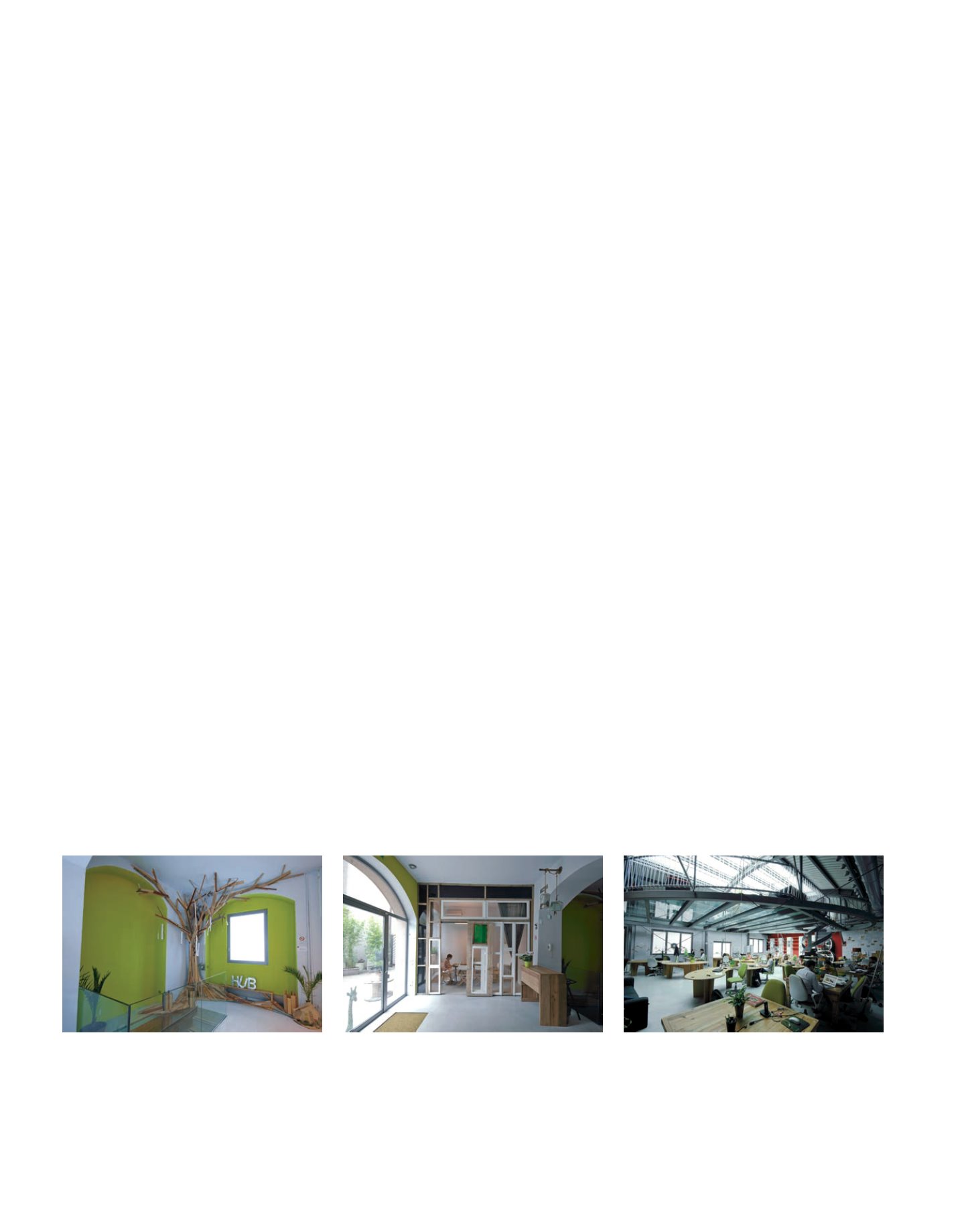
16
Officelayout 156
gennaio-marzo 2014
Coworking, the art of working together
Not a business project, but one of networking where people are what counts: this is the concept behind
coworking and its spaces, which build webs of relations between workers, for the ongoing growth of all
Coworking is a common expression, at this point,
though still hard to find in many dictionaries. In
the collective understanding, it is clearly related
to a concept, apart from its literal interpretation.
The prefix co comes from the Latin cum, while
the English word working has spread, in this new
coinage, even to other languages. Considering
the fact that English comes from the western
branch of the Germanic tongues, onto which
Saxon and then French (conveying Latin) terms
were grafted, the etymology already contains
that basic value of sharing which is the true
genetic legacy of this innovative approach to
work, as is soon discovered by anyone who comes
into contact with the coworking pluriverse. Like
me, for example.
The term coworking was invented in 1996 in
California, and applied in 2005 by Brad
Neuberg when he opened a facility at 801
Minnesota Street in San Francisco, filling it with
Ikea furnishings and saying “here are the
workstations, with everything you need for an
office, available for rent to all. This place is
called the Hat Factory.” What prompted the
young American to take this path was the
desire to bring people together who share a
passion for the jobs they do, and for
innovation, with a need for space in which to
do it. He didn’t want to just rent desks.
In June 2013, in the world, there were over
2300 such spaces, a number that has surely
grown, in keeping with the global trend. Over
900 are located in North America, 150 in South
America, over 90 in Australia, while Africa
accounts for just 40. Europe has 100 more
facilities than North America. The European
capital of coworking is Berlin.
No official definition of coworking exists, and
every facility is different. The concept is still
evolving, seeking its own orientation, just like
the people behind it. Nevertheless, in general,
we can say that coworking means a dynamic
place where people not necessarily operating in
the same sectors or on the same projects can
work, sharing space and resources, such as the
Internet connection, the office equipment and
the coffee machine. Some work alone, others in
groups, establishing in both cases very close
personal ties that can generate benefits for all,
thanks to the intersection of different
experiences and specializations.
So coworking is a new way of working. Some
define it as “the art of online collaboration, or
of working together in an equal way.” No
rivalry, no competition, no sabotaging
colleagues to catch the boss’s eye, no
favoritism, no recommendations. Projects
develop thanks to affinities. Coworking is not a
business project, it is a network project. What
counts are people. The economic results depend
on this dimension and come of their own
accord. Coworking embodies this concept and
applies it in its spaces, constructing webs of
relations among workers who operate shoulder
to shoulder, leading to ongoing growth for all.
New collaborations emerge for new businesses,
and everyone offers micro-consulting services to
everyone else.
Don’t ask “what is coworking?…
ask “Who is coworking?”
Asking “who” is coworking means defining an
identity. This can be provided by people, not
places: people are in charge, and they give
places a meaning.
From coworking, I have understood that the
human capital represented by the sum of many
individuals can easily be transformed into
stable social capital, or namely a system,
because there is an internal relational bond
based on relationships of trust and an overall
vision. This is why coworking is a reality that is
constantly changing.
With these premises, what will be the
development of the dialectic dynamic of creative
and imaginative ecology that sets the tone of
coworking?
I think it is hard to predict this. In 2006 Brad
Neuberg had no idea what he had set in
motion. The same was probably true of Martin
Cooper, Steve Jobs or Bill Gates, at the
beginning. Not to mention Picasso with Les
Demoiselles d'Avignon.
Coworkers bear witness to the appeal of
Impact Hub Milano
è il primo nodo italiano della rete Impact Hubs che conta 60 spazi di coworking nel mondo. Ruota attorno a uno spazio in via Paolo Sarpi 8,
con scrivanie e sale riunioni che si possono affittare e utilizzare in modo flessibile, dove è possibile accedere a workshop, percorsi formativi ed eventi utili allo
sviluppo del proprio progetto. Lo spazio che sostiene l’attività degli hubbers è fisico ma anche e soprattutto relazionale, basato sul network e sulla condivisione
orizzontale delle risorse e delle capacità, in ottica collaborante e corroborante.


